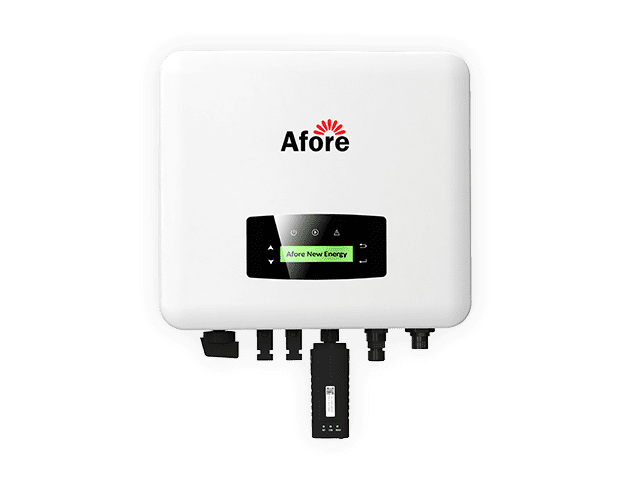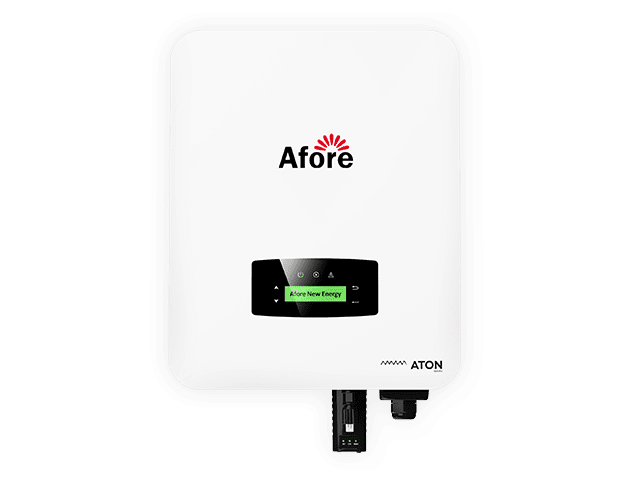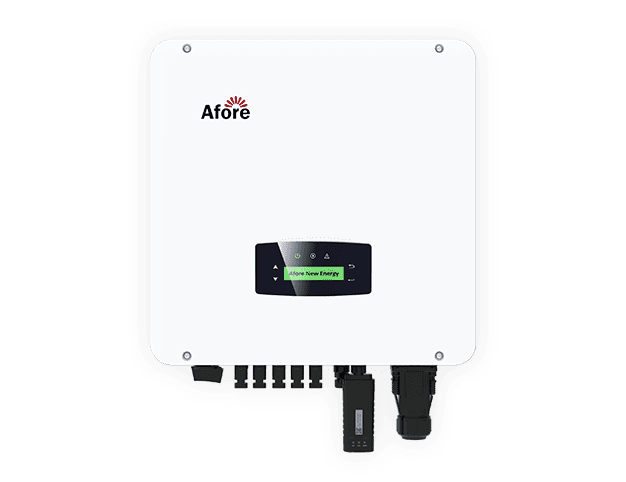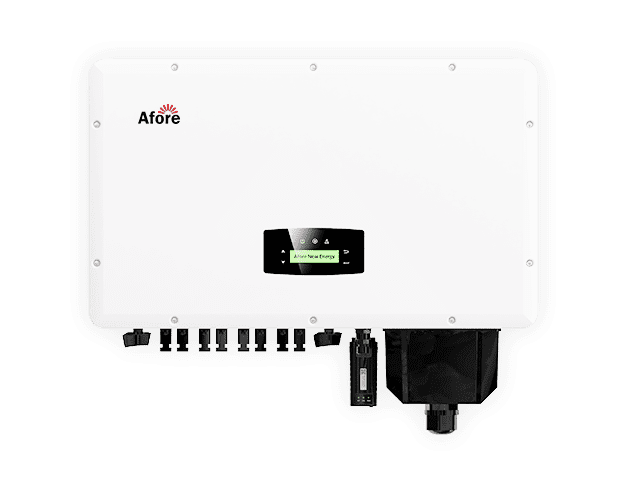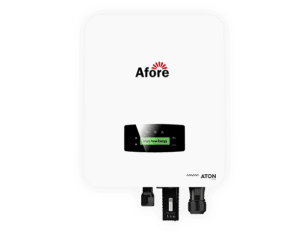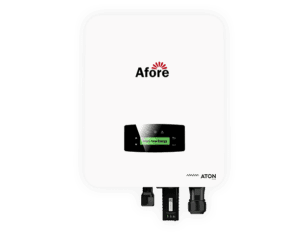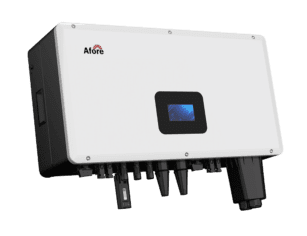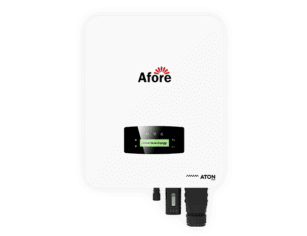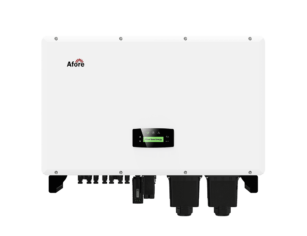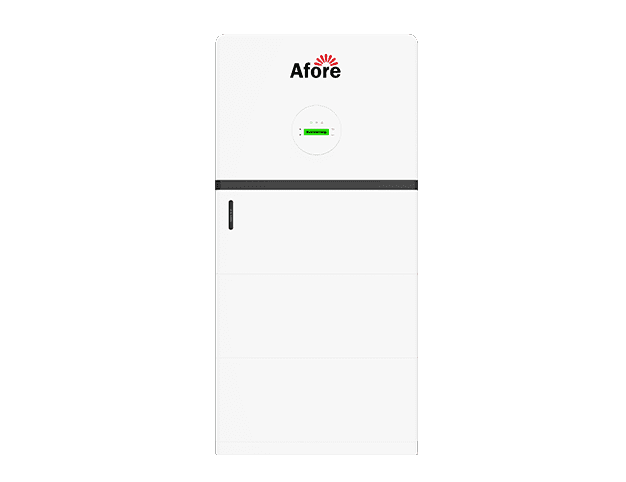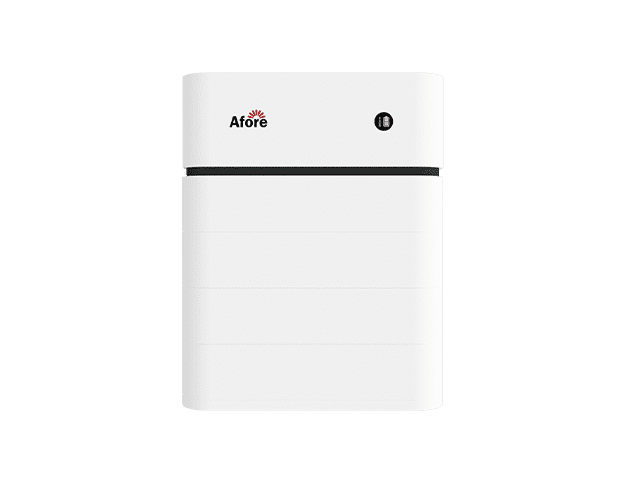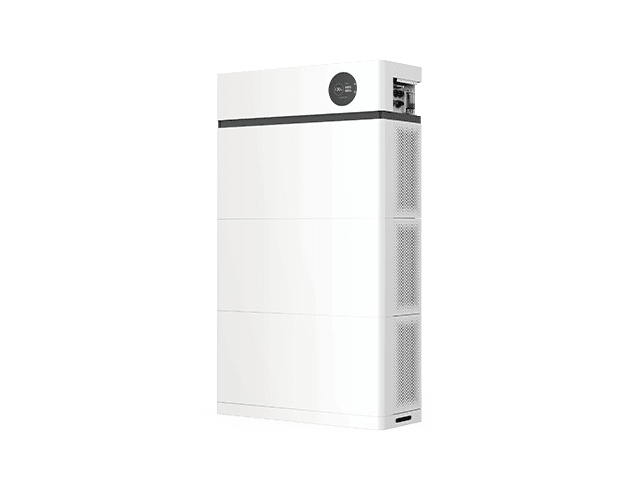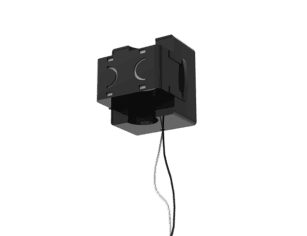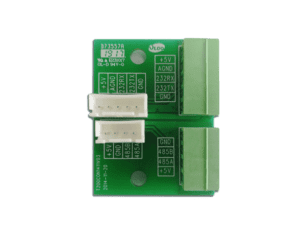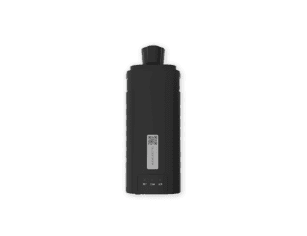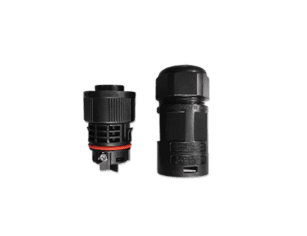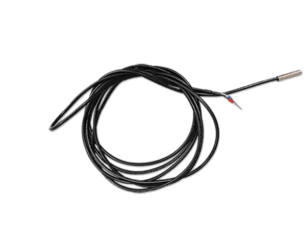Solar Inverter With Battery for Energy Freedom at Home

Table of Contents
Imagine waking up on a stormy morning. The power grid goes down. Lights flicker. Neighbors complain. But your home? Everything keeps running smoothly. Your coffee machine is humming. Your Wi-Fi is alive. You barely notice the blackout.
That stress-free moment happens because of one smart decision: choosing a solar inverter with battery.
We’re at a turning point. People are no longer just buying solar panels — they want full energy independence. And the real magician behind that transformation is a solar inverter with battery, quietly storing sunshine and turning it into the electricity that keeps life moving.
In this complete guide, we’ll explore what makes a solar inverter with battery so essential today, why it gives homeowners more control and freedom, and how to choose one that fits your lifestyle for years ahead.
What Exactly Is a Solar Inverter with Battery?
Let’s keep it real simple. Solar panels grab sunlight and turn it into DC electricity. Cool… but your home doesn’t use DC power — it needs AC. This is where the solar inverter comes in: it converts that energy so your home can use it.
Now — add a battery into this mix.
A Quick Breakdown
A solar inverter with battery:
- Converts DC → AC so appliances can run
- Stores extra energy in a built-in or connected battery
- Lets you use solar power day or night
- Protects your home from outages
Energy goes up, down, sideways — and the inverter manages it all.
Without a battery, any extra solar power just goes back to the grid. Nice for the utility company… not so nice for you. With a solar inverter with battery, the power you produce is the power you keep.
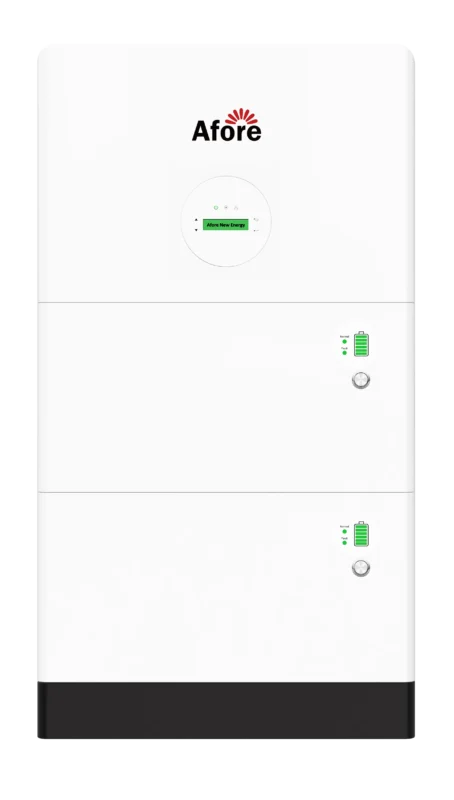
Why Homeowners Are Falling in Love with Solar + Storage
Choosing a solar inverter with battery isn’t just a trend — it’s a powerful shift in how people think about comfort, safety, and money. When I talk to homeowners who’ve made the jump, they often tell me the same thing:
“I didn’t realize how good it feels to be in control of my own electricity.”
Once you experience the difference, it’s hard to go back to depending fully on the grid.
Below are the biggest reasons homeowners are embracing the pairing of solar power and smart storage technology.
True Energy Independence — Your Power, Your Rules
Every homeowner knows that sinking feeling when the lights suddenly go out. Dinner plans ruined. Frozen food in danger. Kids anxious in the dark. But with a solar inverter with battery, your home stands strong even when the grid fails.
You generate clean energy all day, and what you don’t use gets safely stored — ready to carry you through nighttime and emergencies. It’s like having your own private power plant tucked neatly into a corner of your home.
There’s confidence in knowing you are less vulnerable to unexpected blackouts, storms, and growing energy instability. You’re no longer waiting on the utility company to save the day — because you’ve already handled it.
A Real Way to Lower Monthly Electricity Bills
People love the idea of solar, but the moment they see their utility bills drop? That’s pure joy.
Electric companies tend to increase prices during the hours when most people are home cooking, cooling, or streaming. A solar inverter with battery flips the script:
- Charge the battery with sunlight during the day
- Use that stored power during expensive peak hours
Instead of buying overpriced grid energy, you simply use what you’ve already produced for free.
Every cycle of stored sunshine keeps more money in your pocket. It’s a long-term financial win that you can feel every single month.
Smarter Power for Modern, Tech-Filled Homes
Homes today aren’t what they used to be. We have:
- Multiple screens and devices
- Smart appliances
- Security systems
- Remote work equipment
All of this needs reliable electricity — and a solar inverter helps you understand exactly how energy flows throughout your home. You can check apps to see when you’re using the most power, what appliances are energy hogs, and how full your battery is.
The result? Smarter decisions that build even more savings over time.
It feels good to know what’s going on — to actually see where your energy is going instead of guessing.
Protection Against Rising Grid Costs
Let’s be honest: electric bills rarely go down. The grid is aging, fuel costs fluctuate, and demand keeps rising. We can’t control those changes — but we can control how much we rely on the grid.
With a solar inverter with battery, you reduce your exposure to rate hikes. You lock in more predictable costs, and that brings a kind of financial stability every homeowner can appreciate.
You’re not just saving today — you’re shielding your future.
A Meaningful Step Toward Sustainability
Most people care about the planet — they just want solutions that fit real life. A solar inverter with battery makes responsible living easy:
- More clean energy is used instead of wasted
- Less dependence on fossil fuels
- Lower carbon footprint without sacrificing comfort
You don’t have to change your habits or give up convenience. You simply live life as usual — powered by sunshine.
There’s a certain pride that comes from knowing your home contributes to something bigger. It’s one small shift that adds up to a major impact over years.
Quiet, Seamless Comfort — That “Always On” Feeling
When the lights elsewhere go out and your home stays bright, you feel it. When your air conditioner keeps running on a scorching day despite a grid overload, you feel it too.
A solar inverter with battery doesn’t demand attention. No loud generators. No fuel refills. No scrambling for flashlights. Just reliable, silent power that keeps your life peaceful.
Comfort should never depend on luck — and with stored solar energy, it doesn’t.
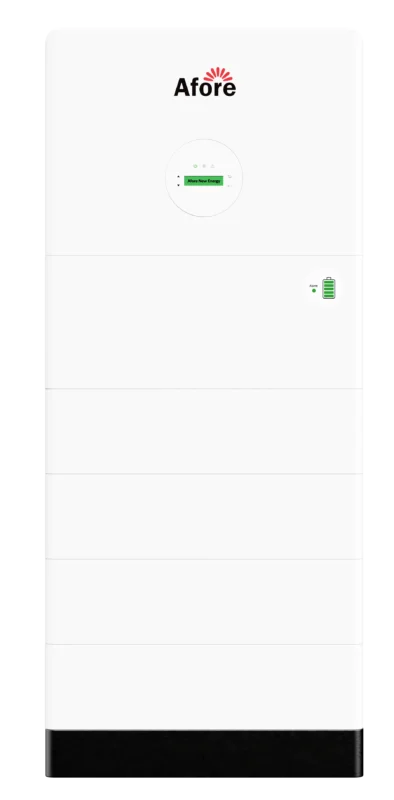
How a Solar Inverter with Battery Works — The Simple Journey of Sunshine
If you’ve ever looked at your rooftop solar and wondered, “Okay, but how does sunlight actually keep my appliances running?” — you’re not alone. The process sounds technical, but it’s surprisingly simple once you break it down. And the solar inverter with battery is the master conductor behind this entire clean-energy orchestra.
Let’s follow the exact path electricity takes — from the sky to your living room.
Step 1: Solar Panels Capture Sunshine
Sunlight hits your solar panels throughout the day. Those panels convert sunshine into DC electricity — the same type used in batteries and many electronics. It’s freshly made energy, direct from the source.
But your home doesn’t use DC power. That’s where the next step happens.
Step 2: The Solar Inverter Converts DC to AC
Your home appliances — everything from your fridge to your phone charger — run on AC electricity.
A solar inverter with battery transforms that raw solar power into smooth, usable electricity that flows into your home instantly.
That conversion happens continuously and automatically. You don’t push any buttons. You don’t even notice it. The inverter just does its job quietly in the background all day long.
Step 3: Extra Energy Stores Into the Battery for Later
Here’s where the magic truly happens.
When your home doesn’t need all the power your panels produce — maybe during a sunny afternoon — a solar inverter with battery diverts the excess into its battery system.
The battery becomes a savings account for energy:
- You make a deposit when the sun is out
- You withdraw power when you need it later
Instead of wasted sunshine or cheap credits from the grid, you store valuable electricity for yourself.
Step 4: Your Battery Takes Over When the Sun Goes Down
Nighttime hits. The grid gets expensive. More people are using electricity.
But your home?
It simply switches to stored energy from your solar inverter with battery — seamlessly.
You may be enjoying a movie or cooking dinner and never realize the sun is still powering your evening.
No sun required. No noise. No interruption.
Step 5: Smart Energy Management 24/7
The solar inverter is constantly measuring and adjusting:
- Solar production
- Home usage
- Battery status
- Grid conditions
Every second, it chooses the most efficient and cost-saving energy source. It’s like having a built-in energy manager who works nonstop and never makes mistakes.
Many homeowners describe it as feeling like their power system has a “brain” — one that always picks the smartest option.
Step 6: Automatic Backup When the Grid Fails
If the grid goes down, your solar inverter with battery becomes a lifeline. It instantly switches to backup mode and keeps essential devices running:
- Lights
- Refrigeration
- Wi-Fi
- Security systems
- Medical equipment if needed
There’s no delay. No flicker. You stay powered while the neighborhood goes dark.
That moment alone often convinces people it was worth every penny.

Types of Solar Inverter with Battery Systems
Different homes… different needs. This isn’t a one-size-fits-all world.
Hybrid Solar Inverter with Battery
The most popular option today. Hybrid solar inverter works with both grid and battery.
Great because:
- Flexible
- Future-proof
- Handles outages and daily use
Off-Grid Solar Inverter with Battery
For homes in remote places that say:
“Grid? Never heard of it.”
Full independence with an off-grid solar inverter — but it requires careful planning.
AC-Coupled vs. DC-Coupled Systems
Both use a solar inverter with battery, just wired differently:
- DC-coupled: More efficient solar → battery flow
- AC-coupled: Easier upgrades for existing solar homes
Either way, you’re winning.
What to Look for When Choosing a Solar Inverter with Battery
If you’ve reached the stage where you’re considering investing in a solar inverter with battery, congratulations — you’re already ahead of the curve. But let’s be honest: this isn’t like picking out a new lamp or a microwave. It’s a long-term energy partner for your home. You want to make sure the system performs well not only today but 10, 12, even 15 years from now.
Below are the key factors that truly matter — based on how this technology works in real homes and the insights from energy professionals who install and maintain it every day. When you know what to look for, you’ll feel confident that your choice is the right one.
Battery Storage Capacity — How Long Will You Stay Powered?
Think of battery capacity like the size of the fuel tank in a car. It determines how much power you can store and how long your home can keep running when the sun isn’t shining.
Ask yourself:
- Do you want to stay comfortable through occasional outages?
- Do you want to run your home overnight on stored solar energy?
- Will you power essentials or nearly everything?
The more energy your household uses, the larger your storage should be. Choose based on real lifestyle needs — not just the lowest price.
Output Power Rating — Can It Handle Your Home’s Demands?
Battery capacity is one thing — but power output determines what the system can run at the same time. For example:
- Can the system run the refrigerator and air conditioning?
- Can you cook and charge electronics during an outage?
- Will important equipment keep working during evening hours?
A strong solar inverter with battery should deliver power smoothly to multiple appliances without hesitation. Matching the output rating to household usage ensures daily life continues effortlessly.
Round-Trip Efficiency — Make the Most of Every Sunbeam
Every time electricity flows into the battery and back out again, a tiny amount of energy is lost. A higher round-trip efficiency means:
- You store more of your solar power
- You waste less energy
- You get more savings over time
This is one of the most overlooked specs — but it’s key to maximizing the value of your system.
Smart Energy Management and Monitoring
Today’s homes are connected — your energy system should be too.
A reliable solar inverter with battery should offer:
- Easy-to-read energy tracking
- Insight into what appliances use the most power
- Automatic power-source switching
- Control over when and how battery energy is used
Imagine seeing your energy savings in real time or switching to “backup priority” mode before a storm hits — all from your phone. Smart tools help you make informed decisions without being a tech expert.
Durability and Heat Tolerance — Built for the Real World
Electronics and heat don’t get along. Since a solar inverter with battery may be installed in a garage, outdoor enclosure, or utility room, it needs to be designed to withstand:
- High summer temperatures
- Dust and humidity
- Long hours of continuous operation
A durable product means fewer hiccups and a much longer service life.
Safety Features — Because Your Home Comes First
This technology stores and manages significant amounts of power, so safety isn’t optional — it’s essential. Look for:
- Thermal protection
- Automatic shutdown systems
- Overload safeguards
- Proper certifications for residential use
When installed properly by a qualified professional, a solar inverter with battery keeps your home powered and protected.
Warranty and Long-Term Support
This is a long game. You’ll want a strong warranty that covers both the inverter and battery performance over many years — not just the first few. It’s a good sign when a manufacturer is confident enough to stand behind their product for the long haul.

Common Misconceptions About Solar Inverter with Battery Systems
Let’s clear the air:
“It’s too expensive.”
Costs have dropped massively. Plus, energy bills drop too — the payoff is real.
“It’s complicated.”
The system runs on autopilot. You just enjoy electricity.
“Batteries are dangerous.”
Modern systems use advanced safety tech that shuts issues down fast.
“Only tech geniuses can understand it.”
Trust me… if you can use a phone, you can manage a solar inverter with battery.
Maintenance Tips for Long-Lasting Performance
A solar inverter with battery is designed to run quietly in the background with very little attention from you. But like any important home system, a bit of simple care can go a long way. The goal is to keep your power smooth, your battery healthy, and your investment performing at its best for many years — ideally over a decade.
Below are practical, homeowner-friendly maintenance tips that follow real-world best practices. No technical expertise required — just a little awareness and occasional check-ins.
Keep It in the Right Environment
A solar inverter with battery works hard every day handling high volumes of energy. Heat is one of its biggest enemies. To help it last longer:
- Install it in a spot with proper airflow
- Avoid locations with direct sunlight or excessive heat
- Keep the area dust-free when possible
- Ensure cables and ventilation spaces are not blocked
Cooler conditions = longer lifespan + better performance.
Regular System Monitoring — Just a Quick Check
Most modern systems offer mobile apps or simple interfaces that show:
- How much solar you’re producing
- Battery charge levels
- Energy use in your home
- Any warning notices or performance changes
Taking just a minute each week to look at these numbers helps you catch anything unusual early. Consider it the same as checking the fuel level in your car — easy and smart.
Update Firmware When Available
Software updates usually include:
- Performance improvements
- New features for smarter energy use
- Enhanced safety protections
Your solar inverter with battery improves over time when kept updated — it’s like giving your energy system a brain upgrade.
If you’re not comfortable managing updates, a professional can handle them during scheduled service visits.
Schedule Occasional Professional Inspections
Even though daily user maintenance is minimal, it’s good to have a trained technician take a look every year or two. They can:
- Check wiring and safety components
- Confirm battery health and capacity
- Spot wear-and-tear before it causes issues
This preventive care helps avoid costly repairs later — especially as the system ages.
Keep the Battery in Healthy Charging Cycles
Batteries love balance. While the system manages itself well automatically, a few small habits help maintain strong long-term performance:
- Avoid completely draining the battery on a regular basis
- Let the system operate in its recommended charging range
- Use energy storage smartly — especially during outages
Good habits equal longer battery life and more reliable backup power.
Listen for the Little Clues
Even though the system is quiet, your attention matters. If you notice:
- Changes in fan noise levels
- Unexpected alerts on the monitor
- Reduced energy storage
- Sudden performance drops
Treat these like early warning signs. Most issues start small — catching them early keeps everything running smoothly.
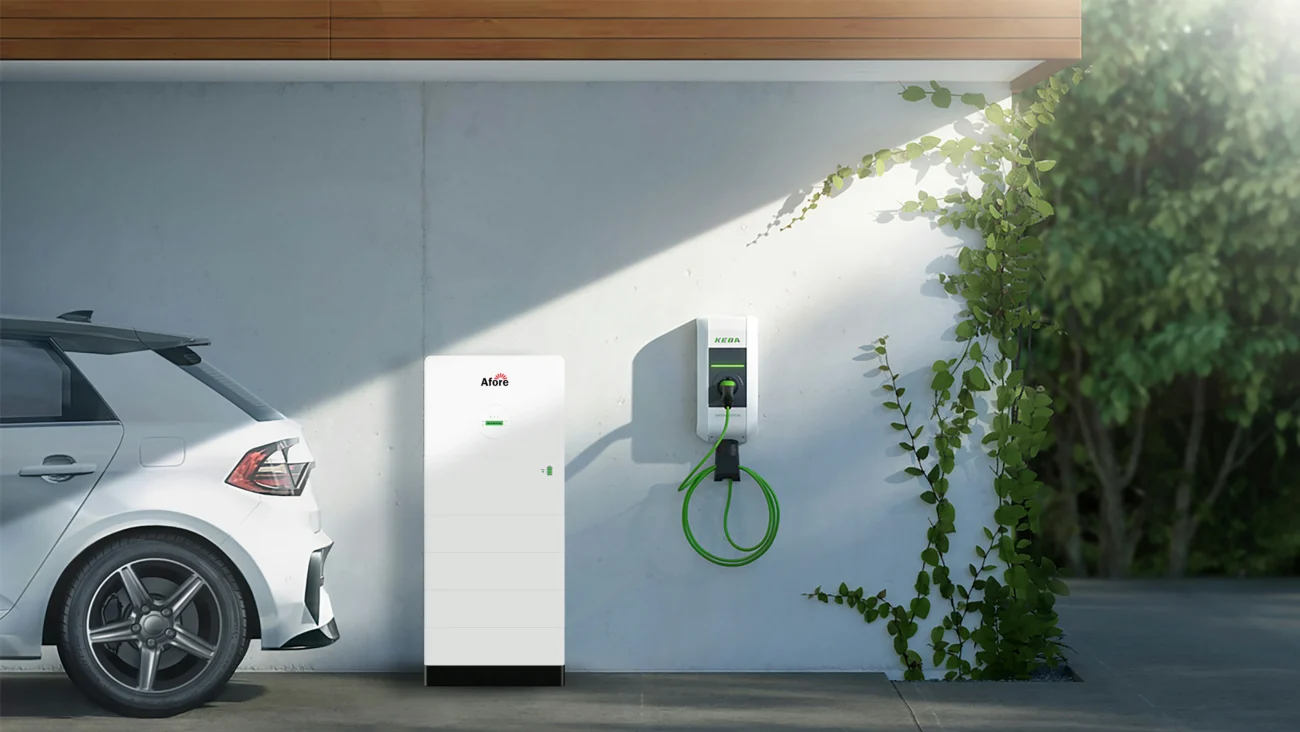
The Future of Home Electricity Is Here — And It’s Stored Sunshine
We are moving toward a world where…
- Grid power becomes optional
- Survivability matters more
- Clean energy is the norm
The solar inverter with battery stands at the center of that future — powering homes with confidence, flexibility, and clean energy you can trust.
There’s something empowering — emotional even — about knowing the sun fuels your life. You’re calmer during storms. You spend less each month. You become part of a solution bigger than yourself.
And the best part?
You feel in control.
Final Thoughts
Life is unpredictable. Power shouldn’t be.
A solar inverter with battery gives you:
- Your own energy on demand
- Protection when the grid fails
- Lower bills month after month
- A cleaner footprint
- A smarter, more empowered home
It’s one upgrade that genuinely changes daily life.
And that’s why so many people are deciding:
“If I’m going solar, I’m doing it right — with backup included.”
Tomorrow’s energy solution is already here.
It’s time to claim your independence — one beam of sunshine at a time.
Frequently Asked Questions
-
What does a solar inverter with battery actually do?
A solar inverter with battery converts the DC energy produced by solar panels into AC electricity for your home. Any extra power is stored in a built-in or connected battery so you can use it later — especially at night or whenever the grid goes down.
It’s the core technology that allows solar power to work around the clock. -
Can a solar inverter with battery keep my home running during a blackout?
Yes — and not in a small way. When the grid loses power, the system automatically switches to stored energy with little or no interruption. Lights stay on, essential appliances keep running, and your home remains safe and functional while others wait for service to be restored.
If you’ve ever experienced a stormy night blackout, this feature alone can feel life-changing. -
How long can the battery power my home?
It depends on two factors:
• Battery storage size (measured in kWh)
• How many devices you run during backup mode
Some homeowners only power essentials, stretching energy for many hours. Others choose batteries large enough to cover most — or all — nighttime usage. The beauty of this technology is that storage can be tailored to your lifestyle. -
What happens when the battery runs low?
If the battery empties and the sun isn’t shining, your home temporarily switches back to the grid. There’s no complication — no effort required on your part. As soon as sunlight returns, the solar inverter with battery starts refilling the battery again.
Seamless transitions keep everything simple. -
Will a solar inverter with battery save me money?
For most homeowners, absolutely.
You avoid buying expensive peak-time electricity and rely more on your own solar power instead. Over the years, these savings add up significantly — especially if energy rates continue rising.
Many people describe it not just as cost-saving… but as financial relief. -
Is maintenance difficult or time-consuming?
Not at all. Most systems are designed for low effort:
• Occasional visual checks
• Basic monitoring through a mobile app
• Rare professional inspections
In normal conditions, a solar inverter with battery quietly does its job with minimal attention. -
Can I add a battery later if I already have solar panels?
In many cases, yes. A solar inverter can be part of:
• A brand-new solar + storage system
• A gradual upgrade where the battery is added in the future
This flexibility allows homeowners to expand their energy independence over time without replacing their entire setup. -
Do weather and cloudy days affect performance?
Cloudy weather reduces solar production during the day — but this is exactly why the solar inverter with battery matters so much. The system stores energy when the sun is strong so your home stays powered even when skies aren’t perfect.
You’re protected from daily energy swings. -
How long does a solar inverter with battery last?
Most are built to operate for 10–15+ years or even longer when properly managed. The investment isn’t just for a season — it remains part of your home for a decade or more, delivering power, protection, and savings.
-
Is it safe?
Yes — extremely safe. These systems include advanced safeguards that automatically shut off power if anything unusual is detected. Modern designs prioritize safety, durability, and reliability from the inside out.
Your home stays protected without you ever needing to worry.





